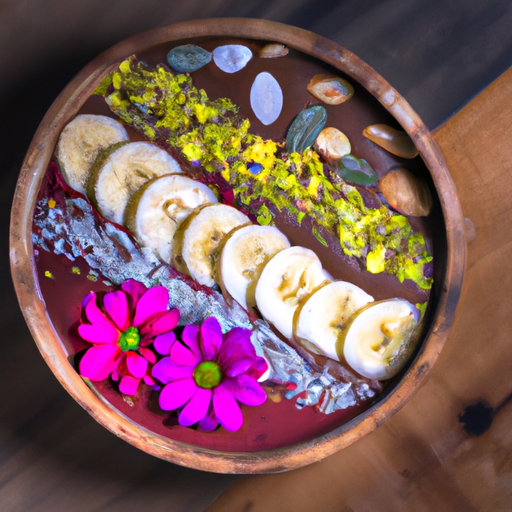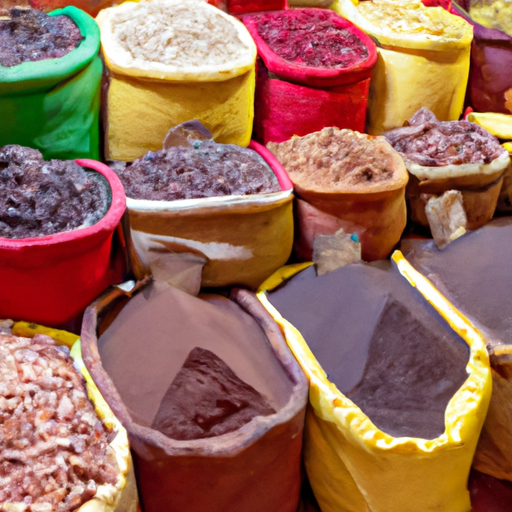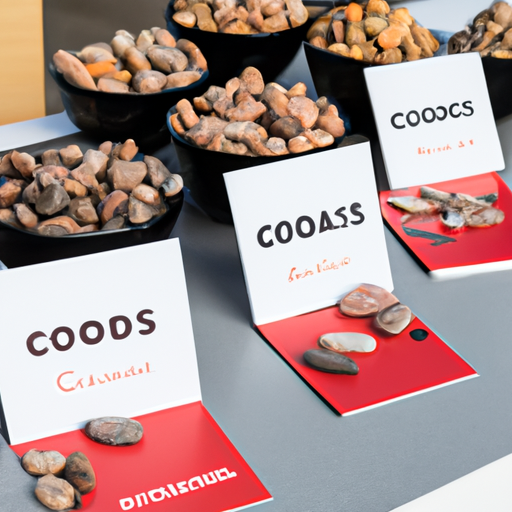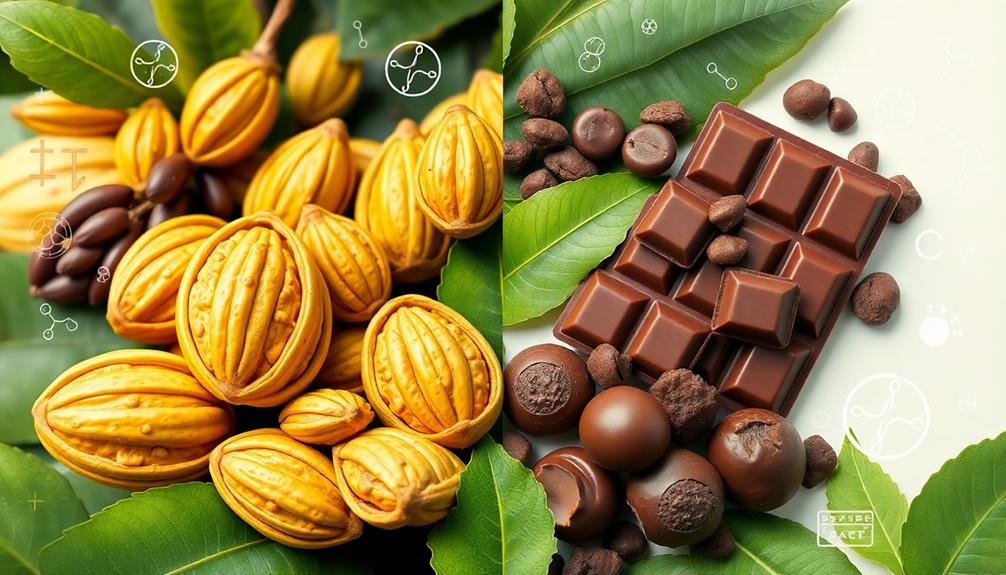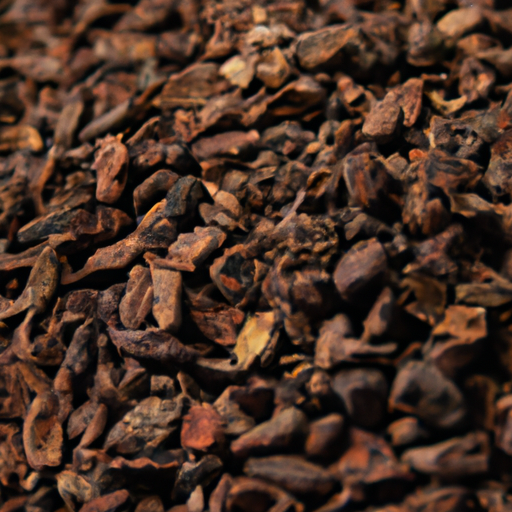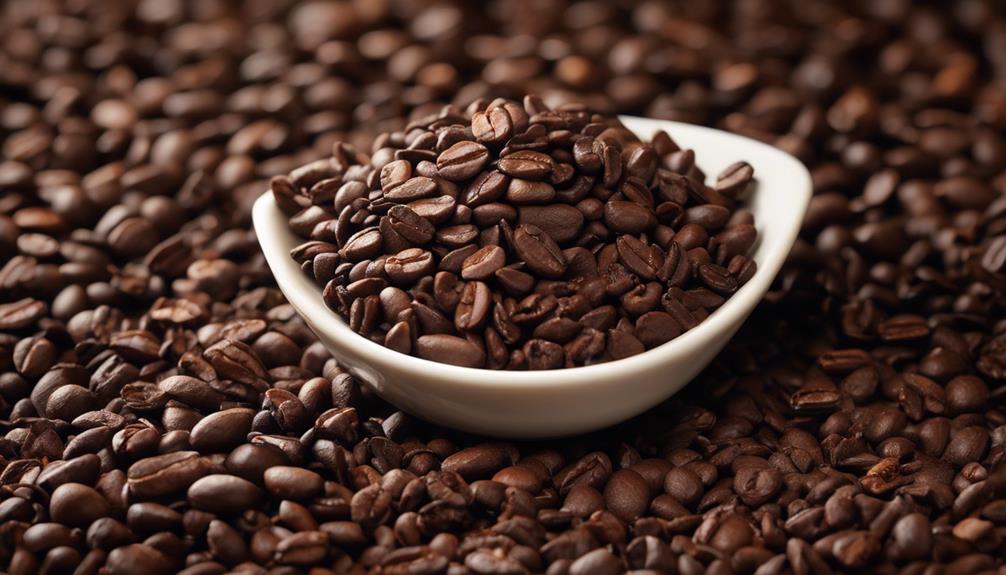Are you a fan of chocolate seeking healthier options? Look no more! This article will provide you with some delicious and nutritious recipes using two superfoods: raw cacao and chia seeds.
These ingredients are not only delicious but also packed with various health benefits. So, get ready to satisfy your sweet tooth guilt-free!
Raw cacao is known for its rich, decadent flavor and is a great source of antioxidants. Chia seeds, on the other hand, are tiny powerhouses loaded with fiber, omega-3 fatty acids, and protein. Together, they make the perfect combo for creating tasty and wholesome dishes.
From energizing breakfast ideas to decadent desserts, I’ve got you covered. Whether you’re in the mood for a delicious smoothie, a savory dish with a twist, or a healthy snack option, I’ll provide you with practical and evidence-based recipes that will keep you coming back for more.
So, let’s dive into the world of raw cacao and chia seeds and discover the endless possibilities they offer for a healthier and tastier lifestyle.
Key Takeaways
- Raw cacao and chia seeds can be used to create a variety of delicious and nutritious snacks and desserts.
- They can be combined with ingredients like nuts, dried fruits, and mixed with yogurt or smoothie bowls for on-the-go snacking or as toppings.
- Chia seeds and raw cacao can also be used to make protein bars, energy bites, brownies, truffles, puddings, and mousse for guilt-free indulgence.
- Additionally, they can be incorporated into savory dishes, such as using a savory cacao rub for meats or adding chia seed salad dressing to greens for a nutritious boost. Experimenting with these ingredients can lead to delicious and unexpected flavors in savory recipes.
Benefits of Raw Cacao and Chia Seeds
There’s no denying the incredible benefits of raw cacao and chia seeds! These superfoods are packed with nutrients that can boost your overall health and well-being.
Chia seeds are a great source of fiber, protein, and omega-3 fatty acids, which can help improve digestion, promote weight loss, and reduce inflammation.
Raw cacao, on the other hand, is rich in antioxidants that can protect against free radicals and improve heart health.
Together, these two ingredients make a powerful combination for superfood smoothie recipes. By incorporating chia seeds and raw cacao into your smoothies, you can create a delicious and nutritious beverage that provides a wide range of health benefits.
Now, let’s dive into some delicious smoothie recipes that will leave you feeling energized and satisfied.
Delicious Smoothie Recipes
Indulge yourself in a mouthwatering blend of rich raw cacao and nutrient-packed chia seeds with these delectable smoothie recipes. Not only are they incredibly delicious, but they also provide a boost of energy and offer a healthy dessert option.
Here are two energizing smoothie recipes to try:
-
Chocolate Chia Bliss: Blend together 1 ripe banana, 1 tablespoon of raw cacao powder, 2 tablespoons of chia seeds, 1 cup of almond milk, and a handful of ice cubes. This decadent smoothie is packed with antioxidants and will satisfy your chocolate cravings.
-
Berry Burst: Combine 1 cup of mixed berries, 1 tablespoon of chia seeds, 1 cup of coconut water, and a squeeze of lemon juice in a blender. This refreshing smoothie is bursting with vitamins and minerals, making it the perfect pick-me-up.
Now that you have some delicious smoothie recipes, let’s move on to energizing breakfast ideas.
Energizing Breakfast Ideas
I love starting my day with energizing breakfast ideas that keep me fueled and satisfied.
One of my favorite options is chia seed pudding with raw cacao. It’s a delicious and nutritious way to incorporate these two ingredients into my morning routine.
Additionally, I enjoy preparing raw cacao and chia seed overnight oats, which are convenient for busy mornings and provide a great source of fiber and antioxidants.
Lastly, I often make homemade chia seed and raw cacao granola bars that give me a boost of energy throughout the day. These options are not only tasty but also provide a great combination of nutrients to kickstart my day.
Chia seed pudding with raw cacao
Mix the creamy chia seed pudding with the rich and earthy flavors of raw cacao, allowing the velvety chocolate goodness to weave its way through every spoonful. This delectable combination not only satisfies your sweet tooth but also provides a nutritious and energizing start to your day.
Here are three variations of chia seed pudding that incorporate raw cacao and chia seeds:
-
Chocolate Banana Chia Seed Pudding: Blend ripe bananas, raw cacao, and chia seeds together, then let it sit overnight for a creamy and indulgent treat.
-
Chocolate Raspberry Chia Seed Pudding: Combine fresh raspberries, raw cacao, and chia seeds with almond milk, refrigerate overnight, and wake up to a burst of fruity flavor.
-
Raw Cacao and Chia Seed Smoothie Bowls: Blend raw cacao, chia seeds, frozen berries, and almond milk until smooth, then top with your favorite toppings like sliced fruits and nuts.
Now, let’s explore the next delicious creation: raw cacao and chia seed overnight oats.
Raw cacao and chia seed overnight oats
Experience a delightful morning surprise with these heavenly overnight oats that combine the velvety richness of raw cacao and the nourishing power of chia seeds. This breakfast will have you feeling like you’re on cloud nine.
Raw cacao is not only delicious, but it is also packed with antioxidants that can help reduce inflammation and improve heart health. Chia seeds, on the other hand, are a great source of fiber, omega-3 fatty acids, and essential minerals.
Together, raw cacao and chia seeds create a delicious and nutritious breakfast option that will keep you satisfied and energized throughout the morning.
If you’re looking for more ways to incorporate these ingredients into your diet, try making a chia seed and raw cacao smoothie bowl or some raw cacao and chia seed energy bites. These options are quick and easy to make, and they make for a perfect on-the-go snack.
Now, let’s move on to the next section about chia seed and raw cacao granola bars.
Chia seed and raw cacao granola bars
Indulge in the rich flavor and nourishing benefits of these homemade granola bars, bursting with the goodness of chia seeds and raw cacao.
Chia seeds are packed with fiber, protein, and omega-3 fatty acids, while raw cacao is a great source of antioxidants and minerals.
These granola bars are not only delicious but also provide a healthy snack option for on-the-go. They are easy to make and require minimal ingredients.
You can also get creative and incorporate other chia seed and raw cacao recipes into your snack rotation, such as chia seed and raw cacao smoothie bowls or raw cacao and chia seed chocolate bark.
These options will keep you satisfied and energized throughout the day.
Moving on to other healthy snack options…
Healthy Snack Options
When it comes to healthy snack options, I love making raw cacao and chia seed energy balls. They are easy to make and packed with nutrients, providing a great boost of energy.
Another favorite snack of mine is chia seed and raw cacao trail mix, which is a perfect combination of crunch and chocolatey goodness.
Lastly, raw cacao and chia seed protein bars are a fantastic option for a quick and satisfying snack that will keep you fueled throughout the day. These snacks not only taste delicious but also provide a good dose of antioxidants, fiber, and protein.
Raw cacao and chia seed energy balls
Combining the rich flavors of raw cacao and the nutritional powerhouse that is chia seeds, these energy balls are a delectable treat that will keep you going throughout the day. Made with just a few simple ingredients, these raw cacao and chia seed energy balls are packed with nutrients and provide a boost of energy when you need it most.
Here are some reasons why you should try them:
- They are a great source of antioxidants, which can help protect against cell damage and boost overall health.
- Chia seeds are high in fiber, which can promote healthy digestion and keep you feeling fuller for longer.
- Raw cacao is rich in magnesium, which is important for muscle and nerve function.
- These energy balls are easy to make and can be stored in the fridge for a quick and convenient snack.
Now, let’s move on to the next section about chia seed and raw cacao trail mix.
Chia seed and raw cacao trail mix
Experience the rich and nourishing blend of chia seed and raw cacao in this delectable trail mix that will keep you energized and satisfied throughout your day. Chia seeds are packed with omega-3 fatty acids, fiber, and antioxidants, while raw cacao is a powerhouse of magnesium and antioxidants. Together, they create a nutritious combination that will fuel your body and mind.
To make this trail mix, simply combine equal parts raw cacao nibs, chia seeds, and your favorite nuts or dried fruits. The table below shows a sample recipe for inspiration:
| Ingredients | Measurement |
|---|---|
| Raw Cacao Nibs | 1/2 cup |
| Chia Seeds | 1/2 cup |
| Mixed Nuts | 1/2 cup |
| Dried Cranberries | 1/4 cup |
| Dried Apricots | 1/4 cup |
Mix everything together in a bowl and store in an airtight container. This trail mix is perfect for on-the-go snacking, and can also be used as a topping for yogurt or smoothie bowls.
Transitioning to the next section, let’s explore the world of raw cacao and chia seed protein bars.
Raw cacao and chia seed protein bars
Indulge in the heavenly goodness of these protein bars, crafted with the harmonious fusion of two ancient treasures that nourish your body and ignite your spirit.
Raw cacao and chia seeds come together to create a delectable treat packed with nutrients. These protein bars are not only delicious but also provide a boost of energy and essential nutrients.
Looking for more ways to incorporate these ingredients into your diet? Try making chia seed and raw cacao smoothie bowls for a refreshing and nutritious breakfast. Or whip up some raw cacao and chia seed energy bites for a quick and healthy snack on the go.
With these recipes, you can enjoy the benefits of raw cacao and chia seeds in different forms. Now, let’s dive into some decadent dessert recipes that will satisfy your sweet tooth.
Decadent Dessert Recipes
For a truly indulgent treat, try whipping up a batch of raw cacao and chia seed brownies. These vegan chocolate delights are not only decadent but also guilt-free desserts that you can enjoy without any hesitation. Here are four mouthwatering options to tantalize your taste buds:
-
Raw cacao and chia seed truffles: These bite-sized delights are rich in antioxidants and healthy fats, making them a perfect guilt-free indulgence.
-
Chia seed pudding with raw cacao: This creamy and nutritious dessert is packed with omega-3 fatty acids and can be customized with your favorite toppings.
-
Raw cacao and chia seed mousse: A velvety smooth dessert that combines the richness of raw cacao with the added texture of chia seeds for a delightful treat.
-
Chia seed energy balls with raw cacao: These no-bake snacks are perfect for on-the-go and provide a quick energy boost while satisfying your sweet tooth.
Now that you’ve satisfied your sweet cravings, let’s dive into some savory recipes with a twist.
Savory Recipes with a Twist
Get ready to try some out-of-the-box recipes that will take your taste buds on a wild ride.
When it comes to savory dinner recipes, incorporating raw cacao and chia seeds can add a unique twist to your meals.
One idea is to make a savory cacao rub for meats like chicken or steak. The bitterness of the raw cacao pairs perfectly with the rich flavors of the meat, creating a deep and complex taste.
Another option is to use chia seeds in a salad dressing. By grinding the seeds and mixing them with vinegar, oil, and spices, you can create a thick and creamy dressing that adds a nutritious boost to your greens.
So go ahead, experiment with these ingredients, and prepare to be pleasantly surprised by the delicious and unexpected flavors they can bring to your savory dishes.
Frequently Asked Questions
Are raw cacao and chia seeds suitable for people with food allergies or intolerances?
Yes, it is important to be aware of cross contamination risks when using raw cacao and chia seeds, especially for those with common food allergies. Always read labels and choose products that are safe for your specific dietary needs.
How can I store raw cacao and chia seeds to maintain their freshness?
To maintain the freshness of raw cacao and chia seeds, store them in a cool, dark place in airtight containers. Avoid exposing them to sunlight, heat, or moisture, as these can cause spoilage. Follow these tips for long term storage and prevent spoilage.
Can raw cacao and chia seeds be used as replacements for ingredients in traditional recipes?
Raw cacao and chia seeds can indeed be used as replacements in traditional recipes, offering both health benefits and a burst of creativity. Explore using them in smoothies, oatmeal, energy balls, and even baked goods for a nutritious twist.
Are there any potential side effects or risks associated with consuming raw cacao and chia seeds?
There are no major side effects associated with consuming raw cacao and chia seeds in recommended serving sizes. Both have potential health benefits, but it’s important to enjoy them as part of a balanced diet.
Where can I buy high-quality raw cacao and chia seeds?
When looking to buy high-quality raw cacao and chia seeds, there are several buying options available. It’s important to compare prices from different sellers to ensure you’re getting the best deal.
Can I Use Raw Cacao Beans and Chia Seeds in the Same Recipe?
Yes, you can definitely use both raw cacao beans and chia seeds in the same recipe to create a delicious and nutritious dish. To ensure the best flavor and health benefits, be sure to buy real raw cacao beans from a reputable source. Happy cooking!
Conclusion
In conclusion, raw cacao and chia seeds are a dynamic duo that can bring great taste and numerous health benefits to your meals. You can make a variety of dishes with these superfoods, including smoothies, desserts, breakfasts, and snacks. Incorporating raw cacao and chia seeds into your diet can fuel your body with essential nutrients and provide a natural boost of energy.
So why not indulge in the goodness of raw cacao and chia seeds? Let them take your culinary creations to new heights. After all, as the saying goes, "A little cocoa and chia can go a long way in nourishing the soul."

